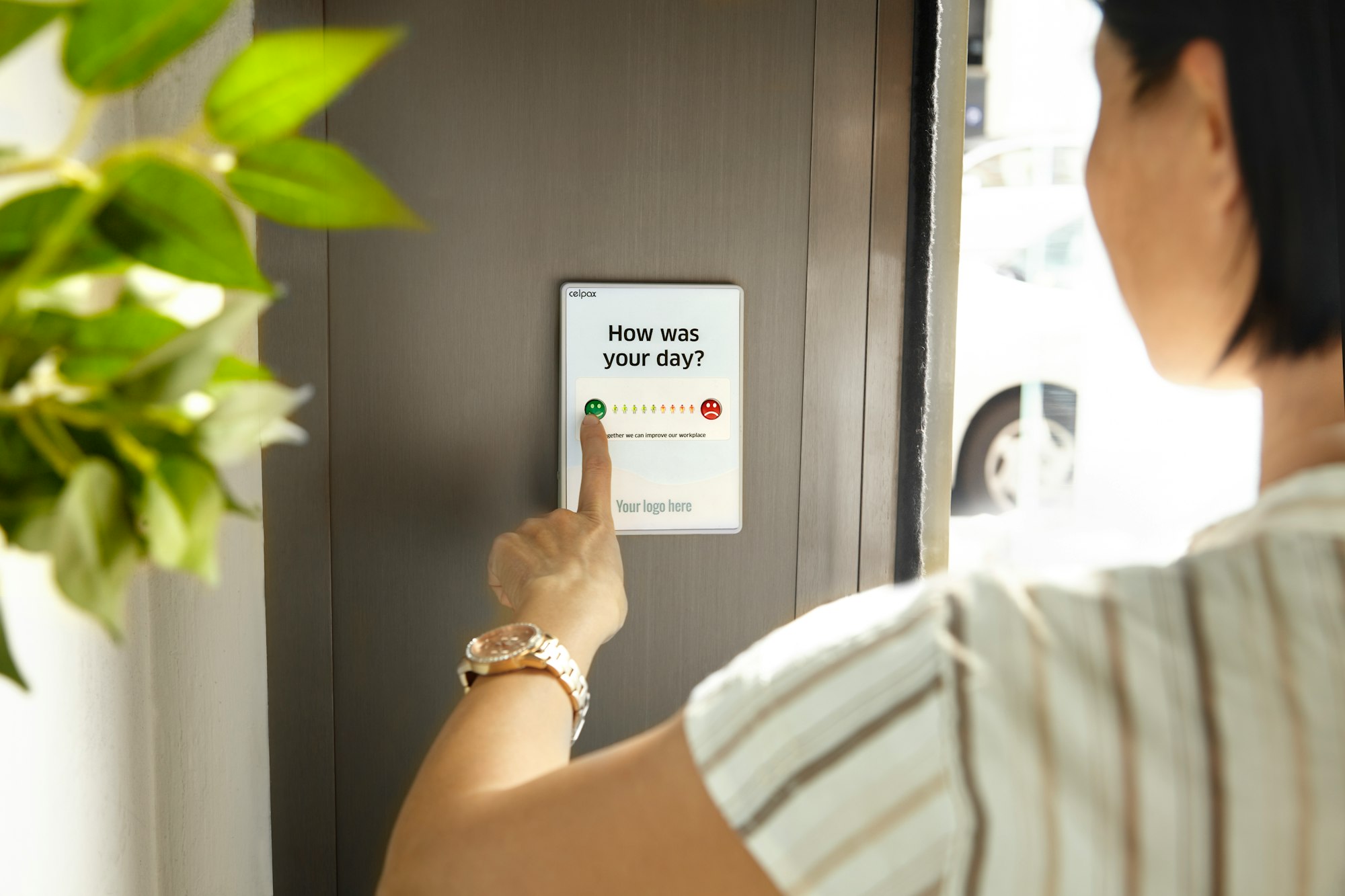Thanks to modern automation technology, you can optimize your marketing, sales, and support processes while also collecting important data about your customers. This data serves as the basis for designing experiences that align with each customer's specific preferences and behaviors. By implementing automated systems effectively, you're not replacing human interaction—you're actually enhancing it.
The benefits of automated customer engagement go beyond just improving efficiency in your operations. Here are some ways it positively impacts your customers :
- 24/7 support availability : Customers can get assistance whenever they need it, without having to wait for business hours.
- Contextually relevant information : Messages and notifications are delivered at the right time, making them more useful and impactful.
- Consistent messaging : Regardless of the channel or platform used, customers receive the same brand message and experience.
- Faster response times : Inquiries and requests are addressed quickly, leading to higher customer satisfaction.
But it's not just your customers who benefit from automation—your business does too. Here are some advantages you gain :
- Reduced manual workload : Tasks that were previously done by humans can now be automated, freeing up time for your team to focus on more strategic activities.
- Elimination of human error : Automation helps minimize mistakes that can occur when tasks are performed manually.
- Actionable insights : By analyzing customer behavior patterns through automated systems, you can gain valuable insights that inform your decision-making.
- Scalable operations : As your business grows, automation allows you to scale your processes without significantly increasing costs.
- Maintained service quality : With automation handling routine tasks, your team has more bandwidth to deliver exceptional service that builds trust and drives revenue growth.
It's important to note that embracing automation doesn't mean abandoning human connection altogether. Instead, it should be seen as a tool for amplifying those connections. The goal is to use technology to enhance customer relationships rather than replace them.

The shift towards automation isn't simply about keeping up with technological advancements—it's about gaining a competitive edge through better customer relationships and operational excellence.
Understanding Automated Experience in Customer Engagement
Automation technology is the foundation of modern customer engagement strategies. It uses advanced software platforms and tools to make interactions between businesses and their customers more efficient.
How Automation Works
- Managing Customer Data : Customer Relationship Management (CRM) systems like Salesforce, HubSpot, and Pipedrive are used to manage customer information and automate tasks.
- Automating Marketing Campaigns : Marketing automation platforms such as Marketo, Pardot, and Mailchimp help businesses create complex email campaigns and respond to customer actions automatically.
- AI-Powered Conversations : Chatbot platforms like Intercom, Drift, and Zendesk Chat use artificial intelligence (AI) to handle common questions, qualify leads, and assist customers during the buying process.
- Creating Unified Customer Profiles : Customer Data Platforms (CDPs) like Segment, Adobe Experience Platform, and Salesforce CDP combine customer data from various sources to create detailed profiles for personalized experiences.
The Role of Data in Automation
Data-driven insights play a crucial role in automated customer engagement. Businesses gather information about customer behavior, preferences, and interaction history through continuous data collection and analysis.
- Machine learning algorithms analyze large amounts of customer data to find patterns, predict future actions, and determine the best time to engage with customers.
- This analytical foundation allows businesses to group customers based on characteristics such as age, purchase history, level of engagement, and stage in their journey. As a result, they can send more targeted and relevant messages.
The Benefits of Automation Across Functions
Routine tasks in marketing, sales, and support can be greatly improved by implementing automation :
Marketing Automation Benefits
- Sending email campaigns based on specific customer groups
- Scheduling social media posts and distributing content
- Evaluating leads and determining their suitability
- Recovering abandoned shopping carts
- Welcoming new subscribers with automated messages
Sales Automation Benefits
- Assigning leads to the right sales representatives
- Reminding salespeople about follow-ups
- Creating proposals and contracts automatically
- Tracking progress through different stages of the sales pipeline
- Generating performance reports and forecasting future results
Customer Support Automation Benefits
- Directing support tickets based on the type and urgency of the issue
- Suggesting relevant articles from the knowledge base
- Handling complex problems by escalating them to higher-level support agents
- Conducting surveys to measure customer satisfaction after resolving issues
- Providing answers to frequently asked questions using chatbots
Key Benefits of Automated Customer Engagement
The strategic implementation of automated experiences transforms how businesses connect with their customers, delivering measurable advantages that extend far beyond simple task automation. These personalization benefits create a foundation for sustainable growth while addressing the evolving expectations of today's digital-first consumers.
1. Better Personalization Through Data-Driven Insights
Customer data analysis serves as the backbone of effective automated experiences, enabling businesses to craft highly targeted interactions that resonate with individual preferences. When you implement automated systems, you gain access to comprehensive behavioral patterns that reveal what customers truly value.
Your automated platforms continuously collect and analyze customer touchpoints, from website navigation patterns to purchase history and support ticket interactions. This wealth of information allows you to segment customers based on :
- Purchase frequency and timing patterns
- Product preferences and category interests
- Communication channel preferences
- Geographic and demographic characteristics
- Engagement levels across different content types
The power of using customer behavior and preferences to tailor messages becomes evident when you examine real-world applications. E-commerce platforms like Amazon leverage browsing history and purchase data to deliver personalized product recommendations through automated email campaigns. These messages arrive at optimal times based on individual customer activity patterns, resulting in significantly higher conversion rates compared to generic promotional content.
Leveraging previous interactions for relevant communication creates a continuous feedback loop that strengthens customer relationships. Your automated systems can reference past purchases, support inquiries, or content engagement to inform future communications. A customer who recently purchased a laptop might receive automated follow-up emails featuring compatible accessories, software recommendations, or extended warranty options - all delivered at strategically timed intervals based on typical usage patterns.

Personalization strategies powered by automation extend beyond simple product recommendations. Dynamic content personalization allows you to customize :
- Email subject lines based on past open rates
- Website landing pages that reflect individual interests
- Social media ad content tailored to engagement history
- Mobile app interfaces that prioritize frequently used features
- Customer service responses that reference previous interactions
The sophistication of modern automated experience platforms enables you to create multi-layered personalization that adapts in real-time. Machine learning algorithms analyze customer responses to automated touchpoints, continuously refining the personalization approach. If a customer consistently ignores promotional emails but engages with educational content
2. Enhanced Operational Efficiency
Process automation transforms how businesses handle routine customer interactions by eliminating time-consuming manual tasks that drain resources and slow response times. You can automate email campaigns, lead scoring, customer onboarding sequences, and support ticket routing, freeing your team to focus on strategic initiatives that drive growth.
Benefits of Task Automation
Task automation benefits become immediately apparent when you implement systems that handle repetitive marketing and support functions :
- Customer service representatives no longer spend hours categorizing tickets or sending standard responses.
- Instead, automated workflows instantly route inquiries to the appropriate departments while triggering personalized acknowledgment messages based on customer history and preferences.
The operational efficiency gains extend beyond simple time savings. Automated systems process thousands of customer interactions simultaneously without fatigue or inconsistency. You eliminate the bottlenecks that occur when human agents handle peak volumes, ensuring customers receive immediate responses regardless of time zones or business hours.
Reducing Human Error with Automation
Reducing human error represents another critical advantage of automation. Manual data entry mistakes, forgotten follow-ups, and inconsistent messaging disappear when you implement standardized automated processes. Your customer data analysis becomes more accurate, leading to better decision-making and improved personalization strategies.
Response times shrink dramatically with automation. Where customers previously waited hours or days for responses, automated systems deliver instant acknowledgments and solutions. Chat bots resolve common queries within seconds, while automated email sequences nurture leads immediately after capture. This speed directly impacts customer satisfaction levels and retention rates.
Seamless Integration for Unified Workflows
Automated experience platforms integrate seamlessly with existing CRM systems, creating unified workflows that span multiple departments. Marketing automation tools trigger sales follow-ups, which then activate customer success workflows, creating a smooth handoff process that eliminates gaps in communication. You maintain consistent engagement throughout the entire customer lifecycle without manual intervention or coordination between teams.
3. Improved Customer Satisfaction and Loyalty
Customer satisfaction reaches new heights when automated experiences deliver timely response and relevant communication at every touchpoint. The personalization benefits of automation create meaningful interactions that resonate with individual customer needs, transforming routine exchanges into memorable experiences that build lasting relationships.
24/7 Real-Time Support Through Automation
Automated customer support systems eliminate the frustration of waiting for business hours or being placed on hold. Chatbots powered by customer data analysis can instantly resolve common inquiries, process returns, and provide product recommendations based on purchase history. You can implement AI-driven support tools like Zendesk's Answer Bot or Intercom's Resolution Bot to handle up to 80% of routine customer queries without human intervention.
These systems excel at providing immediate assistance for :
- Order status updates and tracking information
- Product specifications and compatibility questions
- Account management and billing inquiries
- Technical troubleshooting with step-by-step guidance
Delivering Contextually Relevant Information
Smart automation leverages customer data analysis to deliver personalized content that matches individual preferences and behaviors. When you integrate Customer Data Platforms (CDPs) like Segment or Adobe Real-Time CDP, your automated systems can access comprehensive customer profiles to tailor every interaction.
Contextual relevance manifests through :
- Product recommendations based on browsing history and past purchases
- Targeted promotions aligned with seasonal buying patterns
- Educational content delivered when customers explore new product categories
- Proactive notifications about restocks, price drops, or relevant updates
This level of personalization strategies creates emotional connections that extend beyond transactional relationships. Customers feel understood and valued when your automated experience anticipates their needs, leading to increased loyalty programs participation and higher lifetime value. The combination of instant availability and relevant messaging transforms customer satisfaction from a reactive metric into a proactive competitive advantage.
Scalability, Consistency, and Omnichannel Engagement Enabled by Automation
Scalable engagement becomes achievable when you implement automated systems that handle thousands of customer interactions simultaneously. Your business can maintain high-quality service standards even as your customer base expands exponentially. Automation tools like HubSpot, Salesforce, and Marketo allow you to manage complex customer journeys without hiring proportional staff increases.
Consider how Netflix manages millions of users with personalized recommendations, or how Amazon processes countless customer inquiries through automated chatbots. These companies demonstrate that automated experience can deliver individualized attention at massive scale. You can replicate this approach by implementing Customer Data Platforms (CDPs) that unify customer information and trigger appropriate responses based on specific behaviors or preferences.
Managing Volume Without Quality Compromise
Your automated systems can process customer data in real-time, ensuring each interaction receives appropriate attention regardless of volume spikes. When you automate routine tasks like order confirmations, shipping updates, and basic support inquiries, your human team can focus on complex issues requiring personal touch.
Key scalability advantages include :
- Instant response capabilities during peak traffic periods
- Consistent service delivery across time zones
- Reduced wait times for customer inquiries
- Automated segmentation for targeted messaging
Building Trust Through Communication Consistency
Communication consistency across all touchpoints strengthens your brand credibility. Automated systems ensure your messaging remains uniform whether customers interact through email, social media, live chat, or mobile apps. This consistency eliminates confusion and builds trust as customers receive the same quality experience regardless of their chosen communication channel.
Your automated workflows can maintain brand voice, tone, and messaging standards across departments. When customer service uses the same terminology as your marketing team, and your sales communications align with support interactions, you create a cohesive brand experience that customers recognize and trust.
Seamless Omnichannel Integration
Modern customers expect seamless transitions between channels during their journey with your brand. Omnichannel strategies powered by automation recognize when a customer starts a conversation on social media, continues via email, and completes their purchase through your mobile app.
Your automated systems can track these cross-channel interactions, maintaining context and conversation history.

Data Management, Customer Insights, and Flexibility in Automated Customer Engagement Strategies
Automated customer engagement systems generate massive amounts of valuable data from every interaction, click, and customer touchpoint. Data management tools like Salesforce, HubSpot, and Adobe Experience Platform capture this information systematically, creating comprehensive profiles that reveal customer preferences, purchase patterns, and behavioral trends. You can leverage this wealth of information to understand not just what customers do, but why they make specific decisions.
Transforming Data into Insights
Customer behavior analytics transforms raw interaction data into actionable insights that drive strategic decisions. When customers engage with your automated email campaigns, chatbots, or personalized product recommendations, each interaction provides clues about their evolving preferences. These analytics reveal which content resonates most effectively, optimal timing for outreach, and preferred communication channels. You gain visibility into customer journey patterns that manual analysis would never uncover.
Optimizing Marketing Efforts
The strategic application of these insights extends far beyond immediate customer interactions. Marketing teams use automated data collection to :
- Optimize campaign performance by identifying high-converting content and messaging
- Refine audience segmentation based on actual behavioral patterns rather than assumptions
- Predict customer lifetime value using historical engagement data
- Identify cross-selling and upselling opportunities through purchase behavior analysis
Informing Product Development
Product development teams benefit equally from automated customer insights. Customer feedback collected through automated surveys, support ticket analysis, and usage pattern tracking informs feature prioritization and product roadmap decisions. You can identify pain points in real-time and address them before they impact customer satisfaction scores.
Adapting Engagement Strategies
Adaptive engagement strategies represent the pinnacle of automated customer engagement sophistication. Modern automation platforms like Marketo, Pardot, and Klaviyo enable dynamic workflow adjustments based on changing customer behaviors. When a customer's engagement patterns shift—perhaps they stop opening emails but increase social media interactions—your automated systems can pivot communication strategies accordingly.
Meeting Evolving Customer Needs
Evolving customer needs demand flexible automation frameworks that can adapt without manual intervention. Machine learning algorithms within these systems continuously analyze performance metrics and customer responses, automatically adjusting message frequency, content types, and delivery channels. You can set up triggers that modify customer journeys based on specific behavioral changes, ensuring your engagement remains relevant and effective.
This flexibility extends to seasonal adjustments, market changes, and emerging customer preferences.
Enhancing Brand Image, Compliance, Emotional Connections, and Driving Business Growth with Automation
Enhancing Brand Image with Automation
Brand image enhancement through automation transforms how customers perceive your business at every touchpoint. When you deliver consistently personalized experiences across thousands of interactions simultaneously, you demonstrate sophistication and attention to detail that builds trust. Automated systems ensure your brand voice remains consistent whether a customer receives an email at midnight or engages with your chatbot during peak hours.
The power of automation lies in its ability to remember every customer preference, purchase history, and interaction detail. This comprehensive memory creates experiences that feel genuinely personal rather than generic. When your automated system recommends products based on previous purchases or sends birthday discounts without human intervention, customers recognize the effort behind these gestures.
Building Emotional Bonds Through Intelligent Automation
Emotional connection automation goes beyond simple personalization—it creates meaningful moments that resonate with customers. Your automated workflows can trigger empathetic responses during significant life events, celebrate customer milestones, or provide support exactly when needed. These touchpoints build emotional investment in your brand.
Consider how automated systems can :
- Send congratulatory messages when customers achieve goals using your product
- Provide proactive support before customers encounter common issues
- Remember customer preferences across multiple interactions
- Deliver content that aligns with individual interests and values
Strengthening Compliance with Regulatory Automation
Regulatory compliance automation strengthens brand reputation by ensuring consistent adherence to industry standards. Automated systems eliminate human error in compliance-related communications, maintain proper documentation, and apply regulations uniformly across all customer interactions. This reliability builds confidence among customers who value data security and regulatory adherence.
Driving Measurable Business Growth
Brand loyalty growth accelerates when customers experience seamless, personalized interactions repeatedly. Automated systems create positive feedback loops—each successful interaction increases the likelihood of future engagement. You can track loyalty metrics in real-time and adjust automated responses to strengthen customer relationships continuously.
Revenue increase becomes measurable through automated upselling, cross-selling, and retention campaigns. Your systems identify optimal timing for product recommendations, detect churn risk early, and re-engage dormant customers with targeted offers. The precision of automated timing often outperforms manual efforts because systems can process multiple signals simultaneously.
Automation creates compound effects where improved customer experiences lead to higher retention rates, increased purchase frequency
Best Practices for Implementing Automated Experiences in Customer Engagement
Successful implementation strategies require careful planning and systematic execution to maximize the impact of your automated experience initiatives. You need to approach automation as a strategic investment rather than a quick technological fix.
Start with Clear Objectives and Customer Journey Mapping
Define specific goals for your automation efforts before selecting tools or platforms. Map your customer journey to identify touchpoints where automation can add the most value. You should analyze existing pain points in your current engagement processes and prioritize areas where customers experience delays or inconsistencies.
Choose the Right Technology Stack
Select automation tools that integrate seamlessly with your existing CRM, marketing platforms, and customer service systems. Popular options include HubSpot for marketing automation, Salesforce for sales processes, and Zendesk for customer support workflows. You want platforms that offer robust APIs and can share data across your entire technology ecosystem.
Implement Gradually with Pilot Programs
Best practices automation involves starting small and scaling systematically. Launch pilot programs with specific customer segments or particular use cases before rolling out company-wide. This approach allows you to test workflows, identify potential issues, and refine your processes without disrupting your entire customer base.
Establish Data Quality Standards
Your automated experience depends heavily on clean, accurate customer data. Implement data validation rules, regular database cleaning procedures, and standardized data entry protocols. You need consistent data formats across all systems to ensure your automation triggers work correctly and deliver relevant content.
Train Your Team and Create Governance Protocols
Develop comprehensive training programs for team members who will manage automated systems. Establish clear governance protocols that define who can modify workflows, approval processes for new automation rules, and regular review schedules. You should create documentation that outlines your automation logic and decision trees for future reference and troubleshooting.
The Future of Automated Engagement: Why You Should Use Automation to Succeed in Business
The future of automated engagement looks bright for businesses that want to improve their relationships with customers. With the ongoing development of artificial intelligence and machine learning technologies, automated experiences will become more advanced, offering highly personalized interactions that feel truly human.
What to Expect from Automation
We can expect automation to go beyond basic chatbots and email sequences. Here are some ways it may evolve :
- Predictive analytics will anticipate customer needs before they arise.
- Voice and visual recognition technologies will create seamless omnichannel experiences.
- Smart automation will adapt in real-time, learning from each interaction to refine future engagements.
The Benefits of Automation
The business benefits summary speaks volumes about automation's transformative power :
- Revenue Growth: Companies implementing comprehensive automated experiences report 15-20% increases in customer lifetime value
- Cost Reduction: Operational costs decrease by up to 30% through efficient resource allocation
- Customer Retention: Personalized automated touchpoints boost retention rates by 25-35%
- Market Responsiveness: Real-time data processing enables instant strategy adjustments
Why You Should Act Now
Your competitive advantage depends on embracing automated experience technologies now. Businesses that delay adoption risk falling behind competitors who leverage automation's scalability, consistency, and personalization capabilities.
The question isn't whether to implement automation—it's how quickly you can integrate these powerful tools into your customer engagement strategy. Start building your automated experience framework today to secure your position in tomorrow's customer-centric marketplace.
FAQs (Frequently Asked Questions)
What is automated experience in customer engagement and how does it enhance interactions ?
Automated experience in customer engagement refers to the use of automation technology and software to streamline and personalize customer interactions. By leveraging data-driven insights, businesses can automate routine marketing, sales, and support tasks, resulting in more personalized and efficient communication that enhances overall customer engagement.
How does data-driven personalization improve customer engagement ?
Data-driven personalization utilizes customer behavior and preferences to tailor messages and interactions. By analyzing previous interactions, businesses can deliver relevant communication that resonates with customers, leading to better personalization, increased satisfaction, and stronger loyalty.
What are the key benefits of automating customer engagement processes ?
Automating customer engagement offers several benefits including enhanced operational efficiency by reducing manual tasks, improved personalization through data analysis, increased customer satisfaction via timely and relevant responses, scalability to handle large volumes of customers without sacrificing quality, consistent messaging across channels, and the ability to engage customers omnichannel seamlessly.
How does automation contribute to scalability and consistency in customer communications ?
Automation enables businesses to manage large volumes of customers effectively while maintaining high-quality interactions. It ensures consistent messaging across multiple channels which builds trust with customers. Automated systems also facilitate omnichannel strategies that allow seamless engagement across various platforms such as email, social media, chatbots, and more.
In what ways can automated customer engagement strategies adapt to evolving customer needs ?
Automated engagement strategies leverage customer behavior analytics and data management tools to collect valuable insights from interactions. These insights allow businesses to optimize marketing efforts, adjust workflows dynamically based on changing preferences or behaviors, and implement adaptive engagement tactics that meet evolving customer demands effectively.
What are best practices for implementing automated experiences in customer engagement ?
Best practices include integrating automation tools effectively into existing systems with clear implementation strategies. This involves selecting appropriate technologies that align with business goals, ensuring regulatory compliance through automation where applicable, focusing on creating emotional connections through personalized experiences at scale, continuously monitoring performance metrics, and iteratively refining automated workflows for optimal results.











